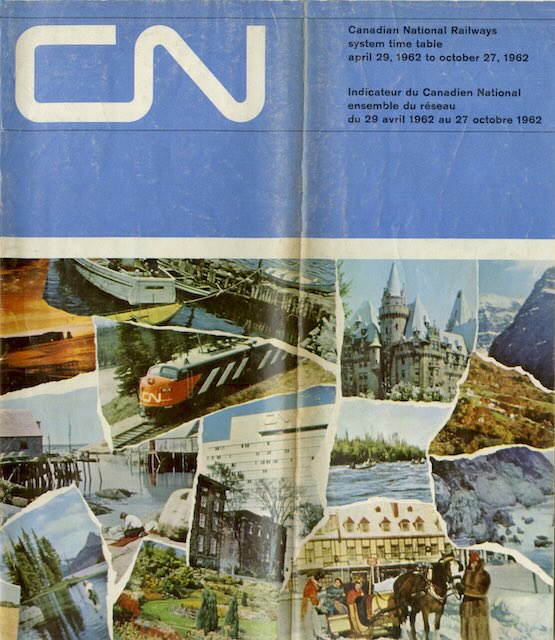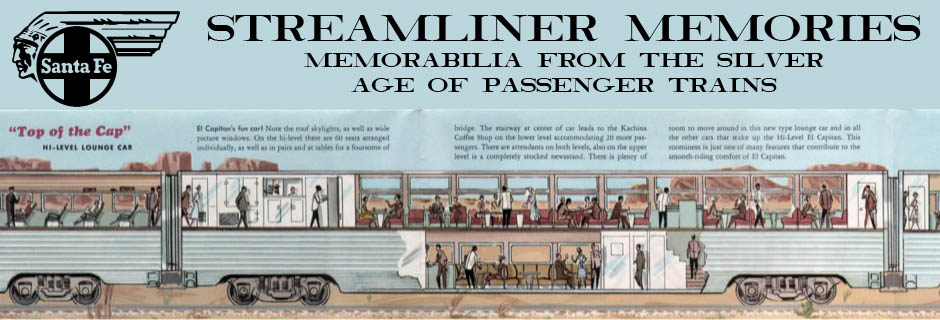While yesterday’s 1961 timetable, which immediately preceded this one, was 52 pages long, today’s April 1962 edition is 68 pages. One of the reasons for the increased length is that this is Canadian National’s first bilingual timetable. While yesterday’s timetable didn’t even include a token use of French, in today’s every table heading, every ad but one, and every informational page is printed in two different languages.
 Click image to download a 46.0-MB PDF of this 68-page timetable.
Click image to download a 46.0-MB PDF of this 68-page timetable.
The tables themselves are only in one language because most city names were spelled the same by both English and French speakers (though today’s uses Montréal while the 1961 edition used Montreal). But a lot more space was used for other sections, particularly for the ads and general information. The only ad that isn’t bilingual is a full-page ad for Trans-Canada Air Lines, which would go bilingual in the next timetable.
Canada didn’t become legally bilingual until the 1969 passage of the Official Languages Act, which required all government agencies to make documents available in both languages. As a state-owned company, this applied to Canadian National. Francophone agitation for such a law began in the early 1960s, and in January 1962 the influential newspaper Le Devoir demanded a public inquiry on bilingualism. Canadian National’s adoption of bilingual timetables starting with this one was in response to this movement.
Another thing that would take up more space in CN’s timetables was the Red, White, and Blue (Rouges, Blancs, et Bleus) fare system, the railroad’s primitive form of what today is called yield management. CN’s system had three different fares depending on the day of the week. Later CN timetables would devote a full page to the fare calendar and six pages instead of two to the fares themselves. However, today’s timetable doesn’t include a fare calendar and manages to list the three fares in just three pages, so the new fare system added only one page to this edition.
